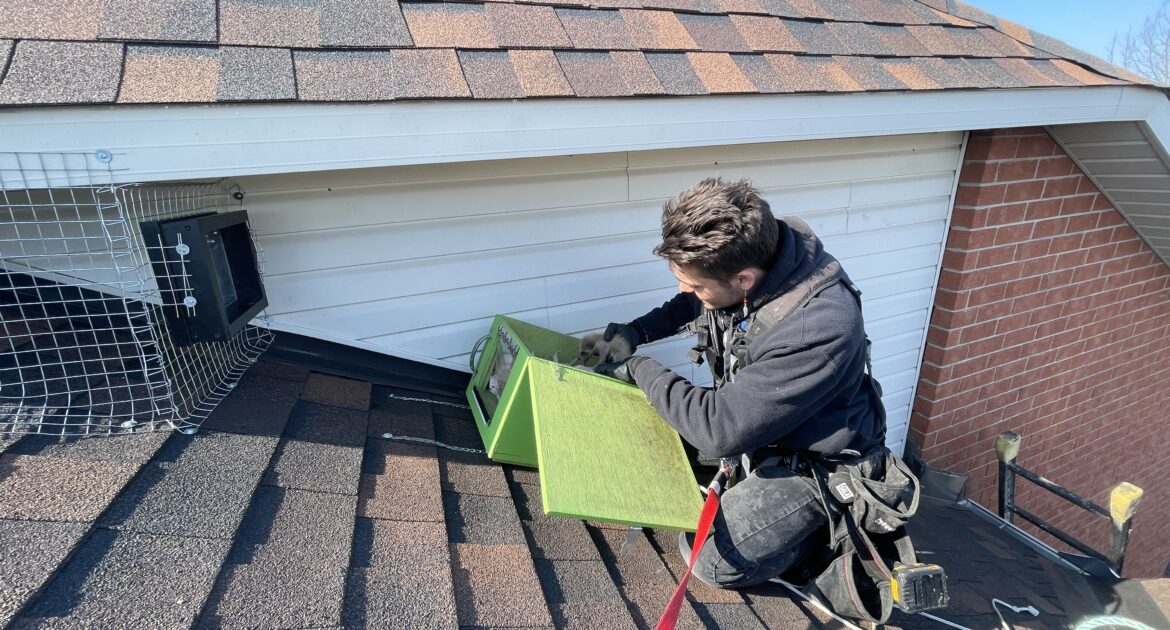Because of the risk of property damage and exposure to diseases, you should get rid of raccoons on your property as soon as possible, but only with the help of a professional. Here are some important steps to take if you think you may have raccoons on your property.
Verify That You Have Raccoons
The signs of a raccoon infestation may look similar to incursion by another animal. For example, many types of wild animals may knock over your trash cans to eat your garbage, not just raccoons. You should confirm that the encroaching animals are, in fact, raccoons.
However, that doesn’t mean you should try to confront the animals face to face. If there are raccoons in your house, it is most likely a female with offspring, and mother raccoons can be violently protective of their babies. Instead, you should do some detective work and look for clues that point to raccoons on your property:
- Paw Prints: Raccoons have five toes on each foot, and their paw prints are asymmetrical. They look a little like human handprints but, at only about two or three inches across, are much smaller.
- Unusual Sounds: Raccoons are most likely to make a den in your attic, but they might show up in places such as the basement as well. They can weigh up to 20 pounds, so you may hear thumping sounds as they move around at night, which is when they are most active.
- Droppings: Raccoons value a clean den and choose a specific place in which to defecate. Look for one of these “latrine” sites around your yard.
Find the Entry Point
It is important to find the entry point by which raccoons are getting in and out of your home. This gives you a clue as to where the den may be, and once the raccoons have been removed, the entry needs to be sealed off completely. Raccoons often have to cause damage to make a hole big enough to fit through. Look for broken soffits or vent covers and missing shingles or fascia.
Pay attention to more subtle signs, however. A clever raccoon may also be able to lift up a soffit without damaging it and crawl under the eaves, leaving hardly a mark behind. Don’t trap raccoons in the house by closing off the entry point too early.
Remove Sources of Food and Water
Many homeowners wonder how to keep raccoons away. Raccoons are highly motivated by food and water, so if you remove sources from your property, raccoons don’t have much reason to linger.
Removing food sources can be tricky because raccoons are omnivores and can eat almost anything. They may eat out of your garbage, bird feeder, garden, or your pet’s food dish given the opportunity. Nevertheless, there are things you can do to stop them from foraging on your property:
- Store garbage in tightly sealed containers and avoid leaving it out overnight, if possible.
- Remove bird feeders or consider placing them far from the house and close to the property line
- Harvest your garden plants promptly
- Avoid feeding pets outside
Raccoons also need fresh water to drink. Fix any leaking pipes or faucets on your property and consider getting rid of bird baths or ponds so that raccoons have to go elsewhere to quench their thirst.

Call Skedaddle for Raccoon Removal
Raccoons don’t go looking for fights, but if you get too close, they can become aggressive. They are frequent carriers of rabies, and you could become exposed to the virus if a raccoon bites or scratches you. Raccoons also look for small spaces to build dens, so even if you managed to get the mother raccoon out on her own, you may not be able to reach the babies. Contact Skedaddle for wildlife removal in Niagara with trained technicians who know how to remove animals without harming them.




